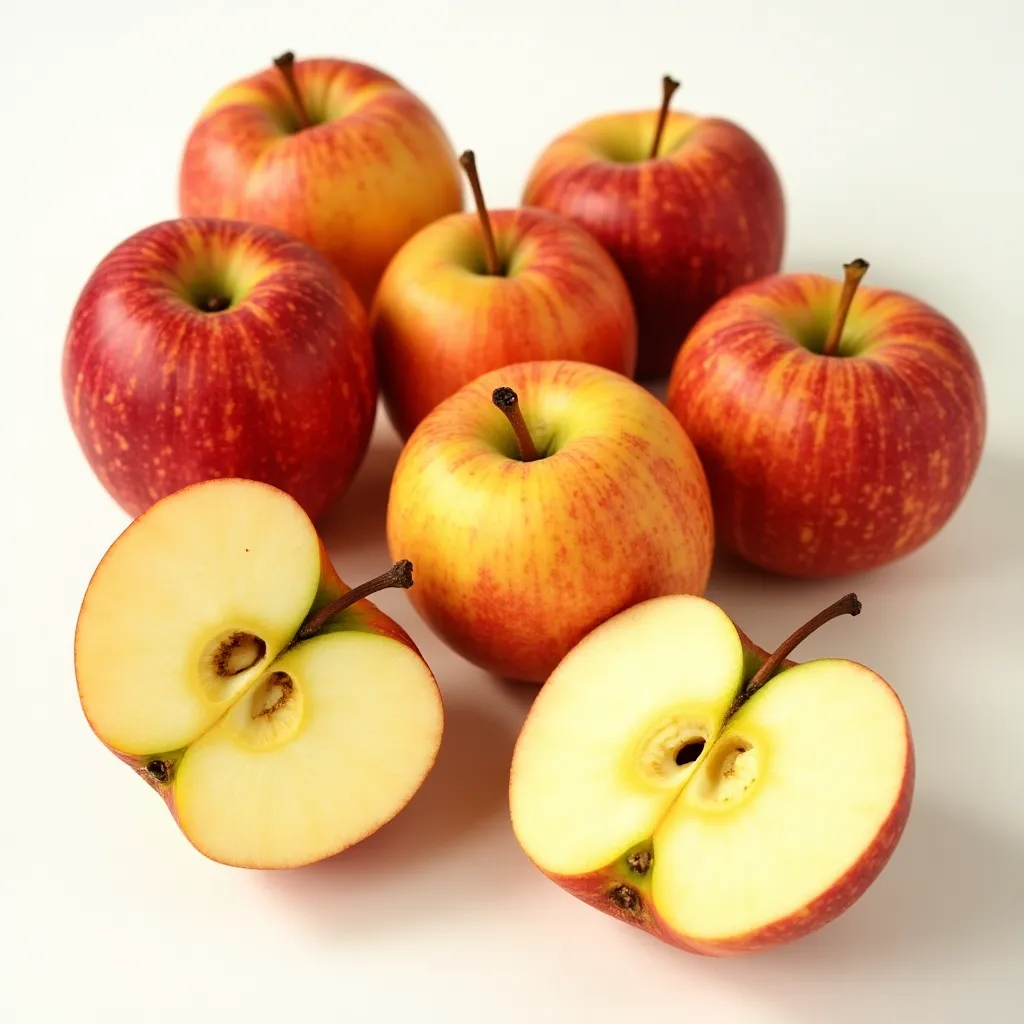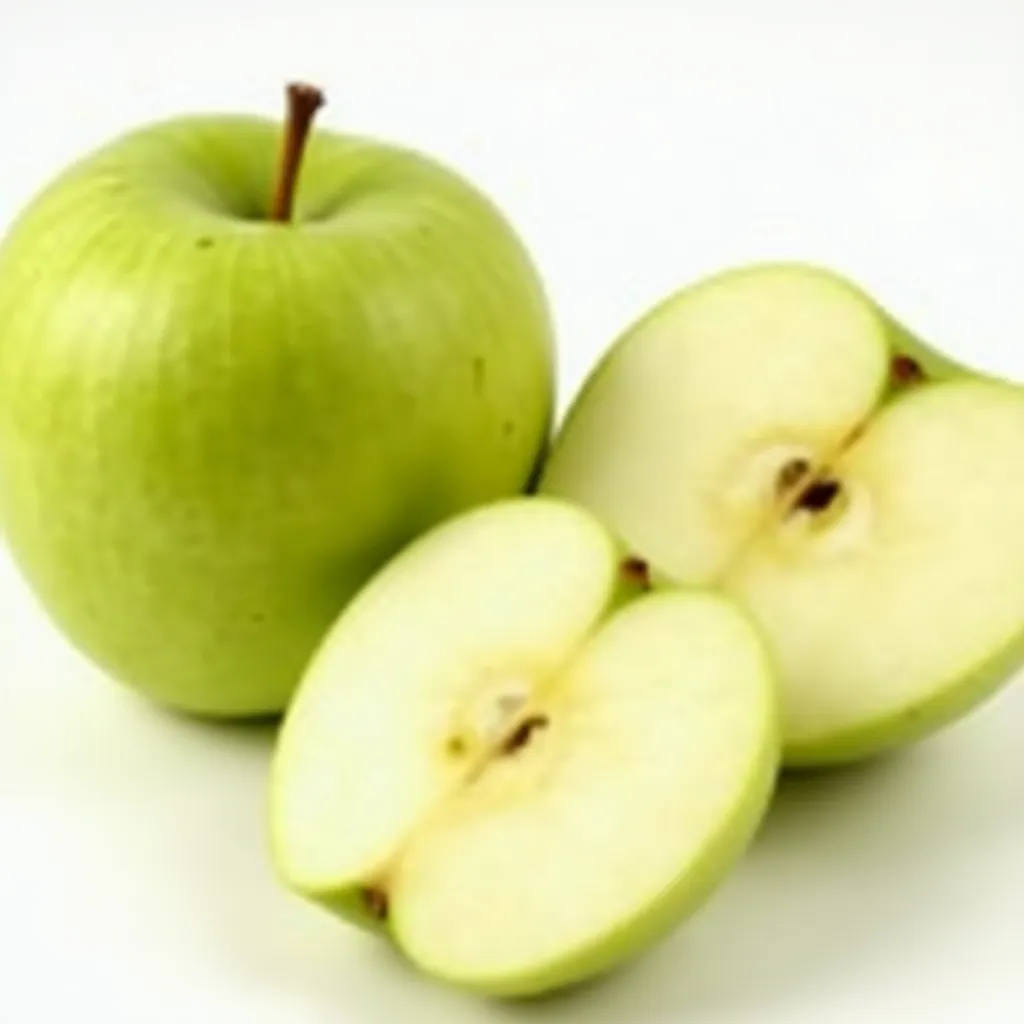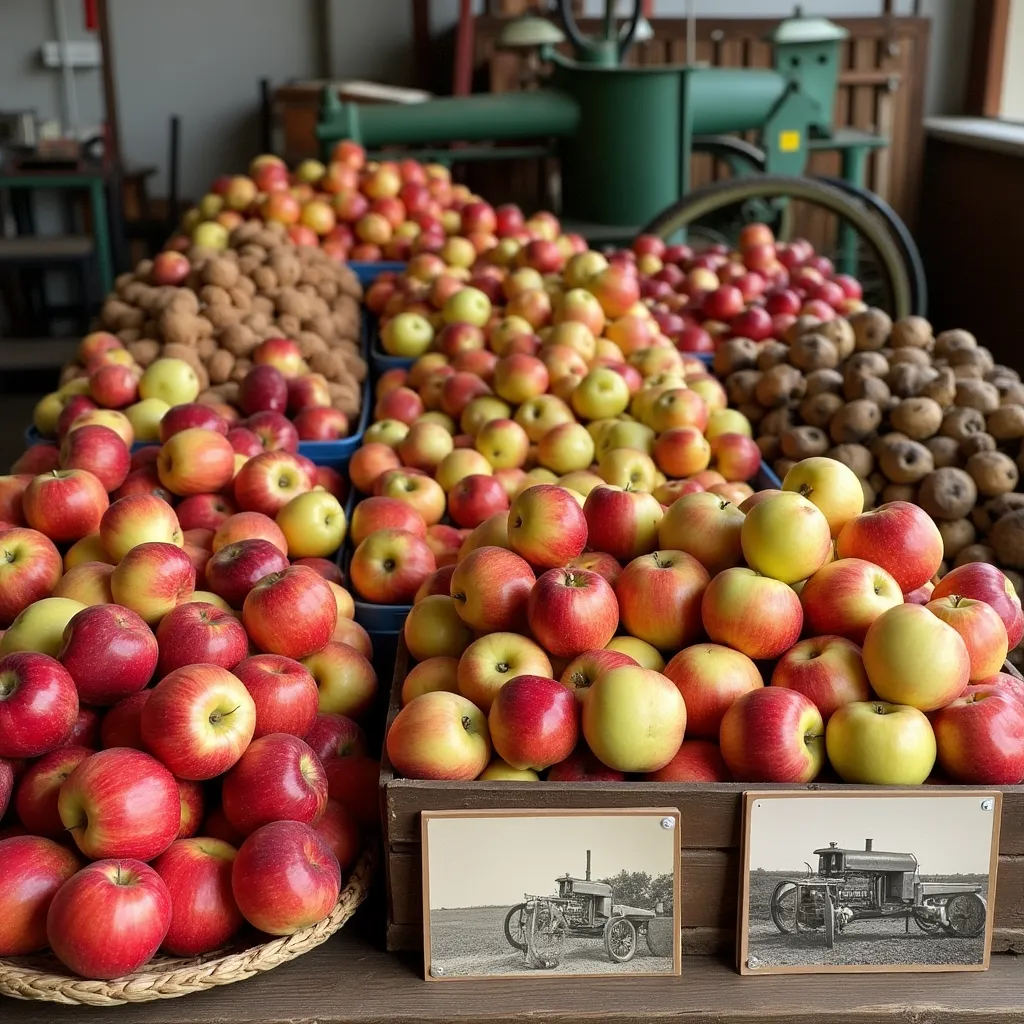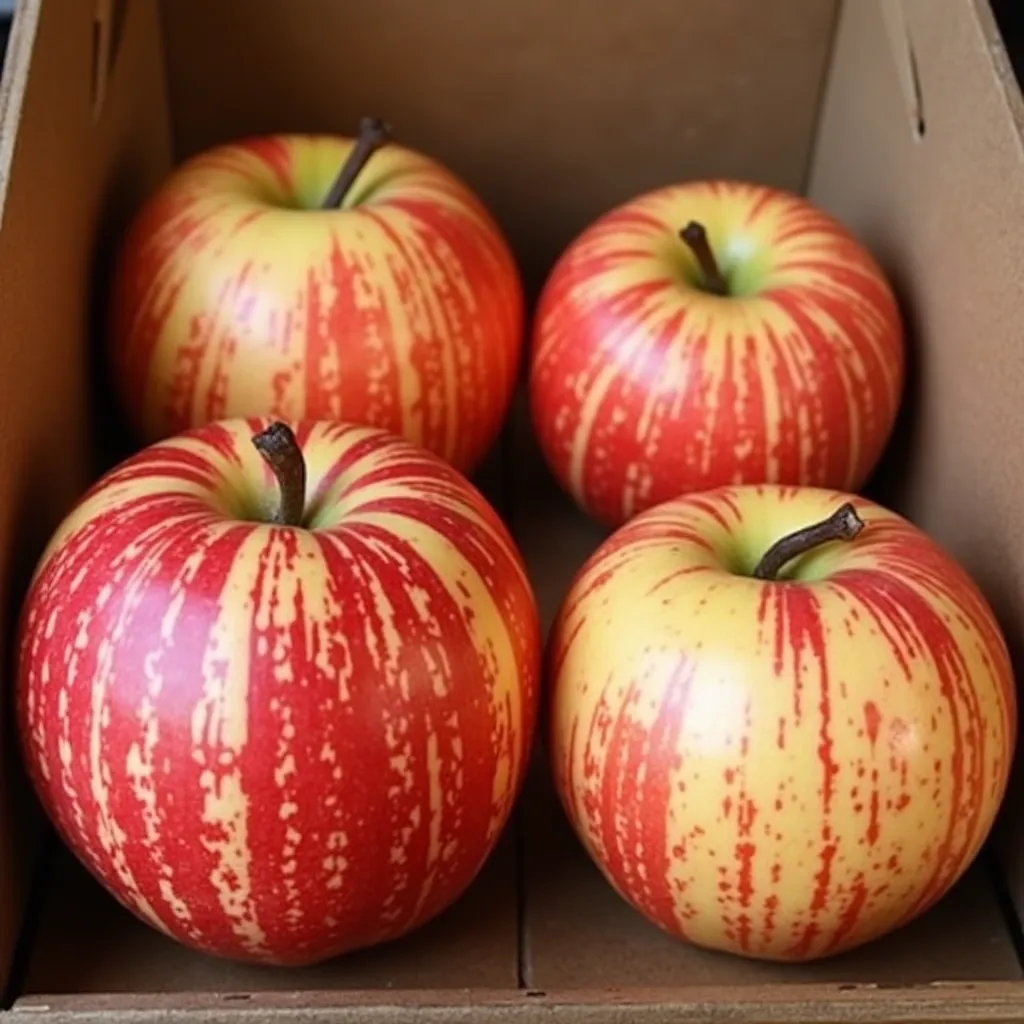· varieties · 4 min read
Cox's Orange Pippin: The Classic Heritage Apple
Cox's Orange Pippin is a renowned heritage apple celebrated for its complex flavor and versatility, perfect for both fresh eating and cooking.

Variety Overview
Cox’s Orange Pippin, often shortened to Cox’s Orange or simply Cox’s, stands as a benchmark for flavor among apple connoisseurs. This heritage variety, originating in England in the early 19th century, is celebrated for its complex and aromatic profile, blending sweetness, tartness, and a hint of spice into a perfectly balanced taste. Its crisp and firm texture makes it delightful for fresh eating, while its ability to hold its shape and flavor when cooked makes it a favorite for baking and culinary creations. The medium-sized apples, typically displaying a mix of red, yellow, and green hues with characteristic striped patterns, are a visual treat as well. While not the easiest apple to grow, given its moderate disease resistance and growing difficulty, the exceptional flavor of Cox’s Orange Pippin makes it well worth the effort for home gardeners and commercial growers alike. Orange pippin trees are a prized addition to any orchard. Its parentage includes Ribston Pippin and an unknown variety, contrary to some belief connecting it to Blenheim Orange.
Characteristics
Cox’s Orange Pippin offers a sensory delight. Its flavor profile is a harmonious blend of sweet and tart, creating a balanced taste that many consider the gold standard for apple flavor. The texture is both crisp and firm, providing a satisfying bite whether eaten fresh or cooked. Visually, the apples are medium-sized, exhibiting a mix of red, yellow, and green colors, often with a striped pattern.
Growing Information
Growing Cox’s Orange Pippin requires some dedication, as it presents a moderate growing difficulty. The trees thrive in spring and summer, with a mid-season harvest. The variety exhibits moderate disease resistance, meaning some preventative measures may be necessary to ensure a healthy crop. Choosing the right location with good air circulation and sunlight is crucial for success with cox’s orange trees.
Best Uses
Cox’s Orange Pippin is exceptionally versatile. For fresh-eating, its complex flavor shines, making it a perfect snack or addition to salads. In baking, its ability to retain its shape and flavor makes it ideal for pies, tarts, and crumbles. Its balanced sweetness and tartness also lend themselves well to cooking, where it can be used in sauces, chutneys, and savory dishes.
History and Origin
Cox’s Orange Pippin originated in the United Kingdom around 1830. It was the result of a chance seedling grown by Richard Cox, a retired brewer, in Buckinghamshire, England. The parentage is confirmed as Ribston Pippin and an unknown variety. This heritage apple quickly gained popularity for its exceptional flavor and has remained a beloved variety for nearly two centuries. It’s important to differentiate it from other varieties like Blenheim Orange, as despite similar names and time periods, they have distinct genetic backgrounds.
Storage and Handling
With a moderate storage life, Cox’s Orange Pippin apples require careful handling and storage to maintain their quality. Storing them in a cool, dark, and humid environment, such as a refrigerator or cellar, will help preserve their crispness and flavor for several weeks.
Availability
Cox’s Orange Pippin apples are typically available during the mid-harvest season, extending into spring and summer months depending on the region and storage practices. Local farmers’ markets and specialty stores are often good sources for finding this heritage variety.
Selection Tips
When selecting Cox’s Orange Pippin apples, look for specimens that are firm to the touch with vibrant red, yellow, and green coloration and characteristic striped patterns. Avoid apples with bruises, soft spots, or broken skin, as these indicate damage or over-ripeness.
Comparison to Similar Varieties
While Cox’s Orange Pippin stands out for its unique flavor profile, it shares some characteristics with other heritage varieties. Its parent, Ribston Pippin, also offers a complex flavor, though generally considered less intense. Unlike the much larger Blenheim Orange, Cox’s Orange Pippin offers a more manageable size and sharper taste.
Common Uses
Elaborating on the best uses, Cox’s Orange Pippin shines as a standalone snack due to its balanced flavor. In culinary applications, it adds depth to both sweet and savory dishes. Consider using it in apple crisps, where its firmness prevents it from becoming mushy, or in a pork roast, where its tartness cuts through the richness of the meat. Its juice is also highly prized for its aromatic qualities.
Growing Tips
Given the moderate growing difficulty and disease resistance of Cox’s Orange Pippin, selecting a suitable planting site is crucial. Ensure the location receives ample sunlight and has good air circulation to minimize disease risk. Regular pruning and thinning of the fruit can also improve the quality and size of the apples. Organic pest control methods are recommended to maintain the health of the trees and the fruit. Consider consulting local agricultural extension services for specific growing advice tailored to your region.


